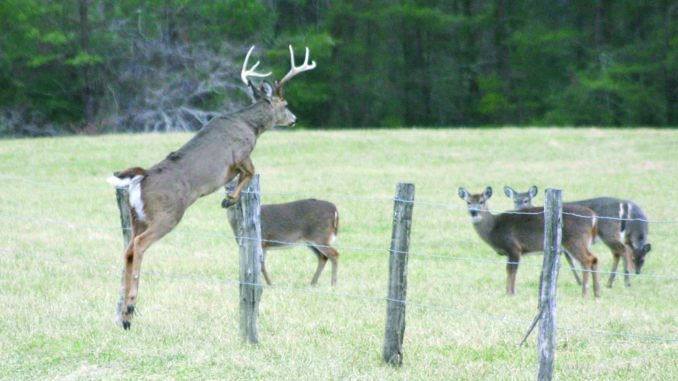
South Carolina’s population continues to rise, along with interaction between humans and wildlife. While deer prefer as little human interaction as possible, it doesn’t take long for deer to come into contact with their first smelly human.
The nature of a small property is detrimental to harboring large mature bucks since hunters have a tendency to frequent the entire tract on a regular basis. While small properties can be gold mines for big bucks, care must be taken to limit unnecessary human-deer interaction during the season and preseason. Old mature bucks become weary of human scent and disturbance.
For starters, deer stands and shooting lanes should be maintained during the offseason. While resident deer will be conditioned to human disturbance around food plots, mature bucks moving onto the property during the peak of rut will not be so tolerant; they become weary of continued disturbance and will leave the area or become nocturnal.
Don’t hunt stands when the wind is unfavorable. Stands should be hunted just a few times per week to limit exposure as well.
Kenneth Shuler of Orangeburg County is a true believer in providing sanctuary areas on his 200-acre property.
“We preserve a 70-acre partition .in the center of our property, with no entry allowed at all during the deer season,” he said.
Properties that adjoin Shuler’s land have heavy hunting pressure, and his sanctuary area collects pressured deer. According to Shuler, his sanctuary actually attracts deer from many other properties to hold refuge. These deer eventually locate food plots adjacent to the sanctuary and offer Shuler chances to see them entering and exiting the protected areas.
Hunters have no control over the level of disturbance on adjacent parcels, but these sanctuaries offer deer refuge from pressure and bedding grounds. Sanctuary areas should be in areas where entry can be controlled. Sanctuary boundaries often begin on the edges of food plots and extend deep into the forest.
Editor’s Note: This story appears as part of a feature in South Carolina Sportsman’s November issue. To ensure you don’t miss any information-packed issues, click here to have each magazine delivered right to your mail box.






Be the first to comment